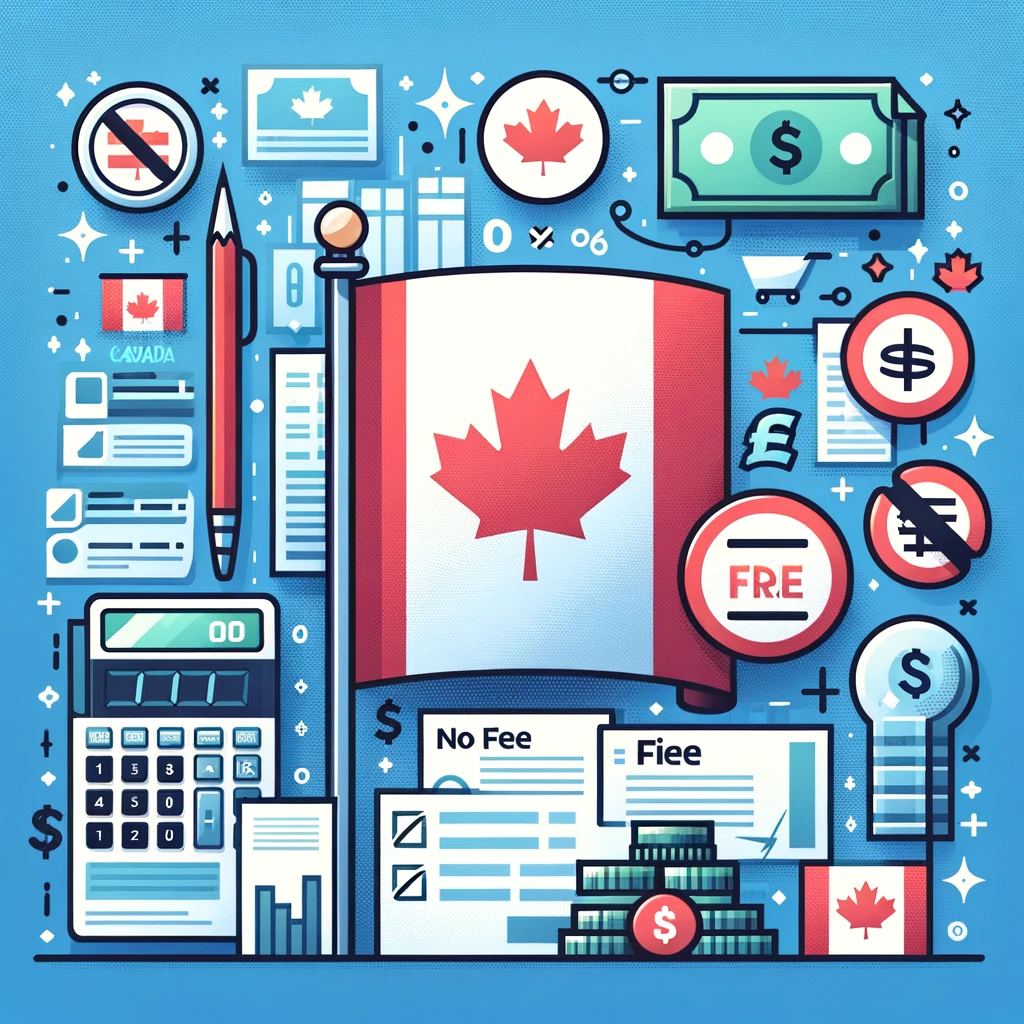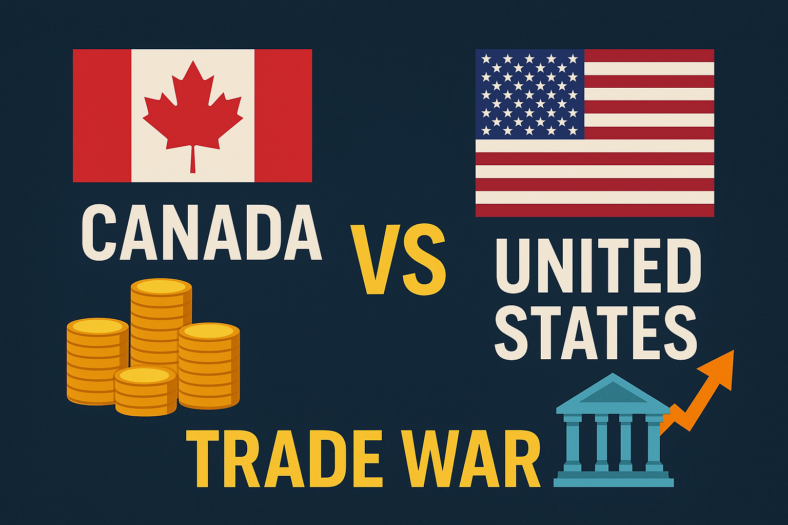Navigating the world of banking can be daunting, especially when it comes to finding the right chequing account. In Canada, where fees seem to be a constant concern, discovering a no-fee chequing account can feel like finding a hidden gem. This guide aims to demystify the landscape of no-fee chequing accounts in Canada, providing clarity on what features to look for, which banks offer them, and how to make the most out of these accounts. Whether you’re a student, a young professional, or someone simply looking to save on banking fees, this guide will serve as your compass in the vast sea of financial options.
Editor’s Picks: Best No-Fee Chequing Accounts in Canada
What is a No-Fee Chequing Account?
A no-fee chequing account is a type of bank account that offers basic banking services without charging any monthly maintenance fees or transaction fees. These accounts are designed to provide essential banking features at no cost to the account holder. Here’s a detailed breakdown of what a typical no-fee chequing account includes:
- No Monthly Fees: Unlike traditional chequing accounts, which often require a monthly maintenance fee, no-fee chequing accounts waive this charge. This means that as long as you maintain the account, you won’t incur any monthly fees simply for having the account open.
- Unlimited Transactions: Many no-fee chequing accounts offer unlimited transactions, including deposits, withdrawals, bill payments, and debit card purchases. This ensures that you can manage your finances without worrying about exceeding a transaction limit and incurring additional fees.
- Free Cheques: Some no-fee chequing accounts provide a set number of free cheques per month or offer them without charge altogether. This is beneficial for those who still rely on writing cheques for certain transactions or bill payments.
- Electronic Transfers: Most no-fee chequing accounts allow for electronic transfers, including Interac e-Transfers and pre-authorized debits. These services enable you to send money to friends, family, or service providers electronically without incurring fees for each transaction.
- Online and Mobile Banking: No-fee chequing accounts typically come with online and mobile banking features, allowing you to manage your account, view transactions, pay bills, and transfer funds conveniently from your computer or smartphone.
- Access to ATMs: Many no-fee chequing accounts provide access to a network of ATMs where you can withdraw cash without incurring additional fees. Some banks even reimburse ATM fees charged by other financial institutions, further reducing the cost of accessing your money.
- Minimal Balance Requirements: While some chequing accounts require you to maintain a minimum balance to avoid monthly fees, many no-fee accounts have no or low balance requirements. This flexibility makes them accessible to individuals with varying financial situations.
- Optional Overdraft Protection: Some no-fee chequing accounts offer optional overdraft protection, allowing you to temporarily overdraw your account up to a certain limit without incurring hefty overdraft fees. However, it’s essential to carefully manage this feature to avoid accumulating unnecessary debt.
Overall, a no-fee chequing account provides a cost-effective solution for managing your day-to-day banking needs without worrying about excessive fees eating into your finances. It’s important to compare the features and offerings of different accounts to find the one that best fits your banking habits and preferences.
What are some common chequing account fees?
Common chequing account fees can vary depending on the financial institution and the type of account you have. Here are some of the most common fees associated with chequing accounts:
- Monthly Maintenance Fee: Many traditional chequing accounts charge a monthly maintenance fee simply for having the account open. This fee can range from a few dollars to more than $20 per month, depending on the bank and the type of account.
- Transaction Fees: Some chequing accounts charge fees for each transaction you make, including withdrawals, transfers, bill payments, and debit card purchases. These fees can add up quickly, especially if you conduct numerous transactions each month.
- Overdraft Fees: If you overdraw your account by spending more money than you have available, you may incur overdraft fees. These fees can be charged per transaction or per day that your account remains overdrawn and can be quite expensive.
- Non-Sufficient Funds (NSF) Fees: If you attempt to make a transaction with insufficient funds in your account, you may incur an NSF fee. This fee is charged when a payment or withdrawal is returned unpaid due to lack of funds.
- ATM Fees: Using an ATM that is not affiliated with your bank’s network may result in ATM fees. These fees can be charged by both your bank and the owner of the ATM, making it costly to access your money at out-of-network ATMs.
- Interac e-Transfer Fees: Some chequing accounts charge fees for sending Interac e-Transfers, which are electronic transfers of funds between individuals or businesses. These fees can vary depending on the account and may apply to both sending and receiving e-Transfers.
- Chequebook Fees: If you request a physical chequebook for your account, you may incur fees for ordering and using cheques. These fees can vary depending on the quantity of cheques and whether you opt for personalized or standard cheques.
- Wire Transfer Fees: Sending or receiving wire transfers, especially international ones, can incur significant fees. These fees vary depending on the bank, the currency, and the destination of the transfer.
- Paper Statement Fees: Some banks charge fees for receiving paper statements in the mail. Opting for electronic statements may help you avoid these fees.
- Account Closure Fees: If you decide to close your chequing account, you may encounter account closure fees. These fees can vary depending on the bank and the type of account.
Understanding these common chequing account fees can help you choose an account that aligns with your financial needs and habits while minimizing the potential for unexpected charges.
Why should you choose a no-fee chequing account?
Choosing a no-fee chequing account offers several benefits that make it an attractive option for many individuals:
- Cost Savings: By opting for a no-fee chequing account, you can avoid paying monthly maintenance fees and transaction fees, helping you save money over time. These savings can add up, especially if you conduct numerous transactions or maintain a low account balance.
- Transparent Pricing: No-fee chequing accounts typically have straightforward pricing structures, making it easier to understand and manage your banking costs. Without worrying about hidden fees or unexpected charges, you can better plan and budget your finances.
- Accessibility: No-fee chequing accounts are often designed to be accessible to a wide range of customers, including students, young professionals, and individuals with modest incomes. They may have lower or no minimum balance requirements, making them more inclusive for individuals who may not meet the criteria for premium accounts.
- Basic Banking Needs: For many people, a chequing account primarily serves as a tool for everyday banking activities, such as depositing paychecks, paying bills, and making purchases. A no-fee chequing account provides all the essential features needed to manage these tasks without unnecessary fees.
- Flexibility: No-fee chequing accounts offer flexibility in how you manage your finances. With unlimited transactions and access to online and mobile banking services, you can conveniently conduct your banking activities without worrying about exceeding transaction limits or incurring additional charges.
- No Commitment: Unlike some premium accounts that require you to maintain a minimum balance or meet certain criteria to waive fees, no-fee chequing accounts typically have fewer strings attached. You can open an account without committing to specific requirements, giving you the freedom to switch banks or account types if your needs change.
- Suitable for Various Lifestyles: Whether you’re a student on a tight budget, a young professional starting your career, or someone looking to simplify your banking, a no-fee chequing account can accommodate different lifestyles and financial situations.
Overall, choosing a no-fee chequing account provides a cost-effective and convenient solution for managing your day-to-day banking needs without worrying about excessive fees. It allows you to focus on what matters most—your financial goals and priorities—without being burdened by unnecessary banking charges.
Benefits of a no-fee chequing account
Opting for a no-fee chequing account offers numerous benefits that cater to a wide range of financial needs and preferences:
- Cost Savings: The most apparent benefit is the significant cost savings. Without monthly maintenance fees or transaction charges, you can manage your money without worrying about fees eating into your finances. This is particularly advantageous for individuals who conduct numerous transactions or maintain low balances.
- Transparent Pricing: No-fee chequing accounts typically come with transparent pricing structures, making it easier to understand and manage your banking costs. With no hidden fees or unexpected charges, you have better control over your finances and can budget more effectively.
- Accessible Banking: No-fee chequing accounts are designed to be accessible to a wide range of customers, including students, young professionals, and individuals with modest incomes. They often have lower or no minimum balance requirements, making banking more inclusive for those who may not meet the criteria for premium accounts.
- Convenient Features: Despite being fee-free, these accounts still offer essential banking features, such as unlimited transactions, online and mobile banking, access to ATMs, and electronic transfers. This ensures that you can manage your finances conveniently and efficiently without sacrificing functionality.
- Flexibility: No-fee chequing accounts provide flexibility in how you manage your money. Whether you’re depositing paychecks, paying bills, or making purchases, you can do so without worrying about transaction limits or additional charges. This flexibility is particularly beneficial for individuals with fluctuating financial needs or unpredictable income streams.
- No Commitment: Unlike some premium accounts that require you to maintain a minimum balance or meet specific criteria to waive fees, no-fee chequing accounts typically have fewer requirements. You can open an account without committing to certain conditions, giving you the freedom to switch banks or account types if your needs change.
- Suitable for Various Lifestyles: No-fee chequing accounts cater to various lifestyles and financial situations. Whether you’re a student, a young professional, a budget-conscious individual, or someone looking to simplify your banking, these accounts provide a suitable solution for managing your day-to-day finances without unnecessary fees.
Overall, opting for a no-fee chequing account empowers you to take control of your finances, save money, and enjoy the convenience of essential banking services without the burden of fees.
Downsides of a no-fee chequing account
While no-fee chequing accounts offer several benefits, they also come with some downsides that may not be suitable for everyone. Here are some potential drawbacks to consider:
- Limited Features: No-fee chequing accounts often come with fewer features compared to premium accounts. This may include limited or no access to rewards programs, premium customer service, or additional perks such as travel insurance or overdraft protection.
- Transaction Limits: Some no-fee chequing accounts impose transaction limits, which could result in additional fees if exceeded. While these limits are often generous, individuals who conduct a high volume of transactions may find them restrictive.
- ATM Access: While many no-fee chequing accounts provide access to a network of ATMs, some may have restrictions on out-of-network ATM usage. This could result in fees if you need to withdraw cash from ATMs that are not affiliated with your bank’s network.
- Overdraft Fees: While overdraft protection may be available as an option, no-fee chequing accounts may still charge fees for overdrawing your account. Without careful management, these fees can add up quickly and negate the cost savings of having a fee-free account.
- Account Requirements: Some banks may require you to meet certain criteria, such as maintaining a minimum balance or setting up direct deposits, to qualify for a no-fee chequing account. Failing to meet these requirements could result in fees or the conversion of your account to a fee-based account.
- Limited Branch Access: Online-only banks or institutions with a limited branch network may offer no-fee chequing accounts but provide limited in-person banking services. This could be a drawback for individuals who prefer or require face-to-face interactions with bank staff.
- Interest Rates: No-fee chequing accounts typically offer minimal or no interest on deposited funds. If you maintain a significant balance in your chequing account, you may miss out on potential interest earnings compared to high-interest savings accounts or investment accounts.
- Availability of Free Services: While the account itself may be fee-free, some ancillary services, such as ordering cheques, requesting paper statements, or using wire transfers, may still incur fees. It’s essential to review the fee schedule carefully to understand what services are included at no charge.
Overall, while no-fee chequing accounts can offer significant cost savings and convenience, it’s essential to weigh the potential downsides and consider your individual banking needs and preferences before making a decision.
How to choose a no-fee chequing account
Choosing the right no-fee chequing account involves considering several factors to ensure it aligns with your financial needs and preferences. Here’s a step-by-step guide to help you make an informed decision:
- Assess Your Banking Habits: Start by evaluating your typical banking activities, including the number of transactions you make each month, how you prefer to access your money (e.g., online, in-person, ATMs), and any specific features or services you require (e.g., Interac e-Transfers, mobile banking).
- Compare Account Features: Research different no-fee chequing accounts offered by banks and credit unions. Compare their features, such as transaction limits, ATM access, online and mobile banking capabilities, overdraft options, and any additional perks or benefits.
- Review Fee Structures: While the account itself may be fee-free, it’s essential to review the fee schedule for any potential charges that may apply to ancillary services or situations, such as overdraft fees, NSF fees, out-of-network ATM fees, or wire transfer fees.
- Consider Accessibility: Determine how accessible the bank or credit union is in terms of branch locations, ATM networks, and online banking services. Choose an institution that offers convenient access to banking services based on your preferences and lifestyle.
- Check Account Requirements: Some banks may have specific requirements to qualify for a no-fee chequing account, such as maintaining a minimum balance, setting up direct deposits, or meeting age or student status criteria. Ensure you understand and can meet these requirements before opening an account.
- Research Customer Reviews: Look for customer reviews and ratings of the banks or credit unions offering the no-fee chequing accounts you’re considering. Pay attention to feedback regarding customer service, account features, and overall satisfaction to gauge the institution’s reputation.
- Evaluate Additional Services: Consider any additional services or benefits offered by the bank or credit union, such as savings accounts, credit cards, investment options, or insurance products. Choosing an institution that offers a range of financial products can provide added convenience and flexibility.
- Read the Fine Print: Before finalizing your decision, carefully review the account terms and conditions, including any disclosures or agreements provided by the bank or credit union. Pay attention to any limitations, exclusions, or important details that may affect your banking experience.
- Seek Personalized Advice: If you’re unsure about which no-fee chequing account is best for you, consider seeking personalized advice from a financial advisor or banking representative. They can help assess your individual needs and recommend the most suitable account option.
By following these steps and conducting thorough research, you can choose a no-fee chequing account that meets your banking needs while maximizing cost savings and convenience.
How to open a no-fee chequing account?
Opening a no-fee chequing account is a relatively straightforward process that can typically be completed online, over the phone, or in person at a bank branch. Here’s a step-by-step guide on how to open a no-fee chequing account:
- Research Account Options: Start by researching different banks and credit unions that offer no-fee chequing accounts. Compare their account features, fee structures, accessibility, and any additional perks or benefits to find the best fit for your needs.
- Gather Required Documents: Before opening an account, you’ll need to gather the necessary documents to verify your identity and address. This typically includes government-issued identification (e.g., driver’s license, passport) and proof of address (e.g., utility bill, lease agreement).
- Choose an Opening Method: Decide how you want to open the account—online, over the phone, or in person at a branch. Many banks offer online account opening options, which can be convenient and efficient.
- Visit Bank’s Website or Branch: If you’re opening the account online, visit the bank’s website and navigate to the section for opening new accounts. Follow the instructions to complete the online application, providing your personal information, contact details, and identification documents as required.
- Complete Application Form: Fill out the account application form with accurate information, including your name, address, date of birth, Social Insurance Number (SIN), employment details, and any other requested information. Review the form carefully before submitting to ensure accuracy.
- Verify Identity: As part of the account opening process, you may need to verify your identity. This could involve answering security questions, providing additional documentation, or undergoing identity verification procedures, depending on the bank’s requirements.
- Fund the Account: Once your account application is approved, you’ll need to fund the account with an initial deposit. This can typically be done through electronic funds transfer (EFT), cheque deposit, or in-person cash deposit at a bank branch.
- Activate Account: After funding the account, it may be necessary to activate it before you can start using it. This could involve setting up online banking access, receiving and activating a debit card, or other activation procedures specified by the bank.
- Review Account Terms: Take the time to review the terms and conditions of your new no-fee chequing account, including any disclosures, agreements, or fee schedules provided by the bank. Familiarize yourself with the account features, limitations, and any important details that may affect your banking experience.
- Start Using Your Account: Once your account is open and activated, you can begin using it for your day-to-day banking needs, such as depositing funds, making withdrawals, paying bills, and using your debit card for purchases.
By following these steps, you can open a no-fee chequing account efficiently and start enjoying the benefits of fee-free banking.
What are some common features that no-fee chequing accounts have?
No-fee chequing accounts typically offer a range of common features to meet the basic banking needs of customers while minimizing fees. Here are some of the most common features you can expect to find:
- No Monthly Maintenance Fees: The primary feature of a no-fee chequing account is the absence of monthly maintenance fees. This means you won’t be charged simply for having the account open.
- Unlimited Transactions: Many no-fee chequing accounts offer unlimited transactions, including deposits, withdrawals, bill payments, and debit card purchases. This allows you to manage your finances without worrying about exceeding transaction limits and incurring additional fees.
- Free Cheques: Some accounts provide a set number of free cheques per month or offer them without charge altogether. This is beneficial for individuals who still rely on writing cheques for certain transactions or bill payments.
- Online and Mobile Banking: No-fee chequing accounts typically come with online and mobile banking features, allowing you to manage your account, view transactions, pay bills, and transfer funds conveniently from your computer or smartphone.
- Access to ATMs: Many accounts provide access to a network of ATMs where you can withdraw cash without incurring additional fees. Some banks even reimburse ATM fees charged by other financial institutions, further reducing the cost of accessing your money.
- Electronic Transfers: Most accounts allow for electronic transfers, including Interac e-Transfers and pre-authorized debits. These services enable you to send money to friends, family, or service providers electronically without incurring fees for each transaction.
- Minimal Balance Requirements: While some chequing accounts require you to maintain a minimum balance to avoid monthly fees, many no-fee accounts have no or low balance requirements. This flexibility makes them accessible to individuals with varying financial situations.
- Optional Overdraft Protection: Some accounts offer optional overdraft protection, allowing you to temporarily overdraw your account up to a certain limit without incurring hefty overdraft fees. However, it’s essential to carefully manage this feature to avoid accumulating unnecessary debt.
- Bill Payment Services: No-fee chequing accounts often provide bill payment services, allowing you to schedule and pay bills directly from your account. This can include recurring payments, one-time payments, and electronic bill presentment.
- Debit Card: Most accounts come with a debit card that can be used to make purchases at merchants and withdraw cash from ATMs. Some debit cards may also offer additional features, such as contactless payments or rewards programs.
These common features make no-fee chequing accounts a convenient and cost-effective option for individuals looking to manage their day-to-day banking needs without incurring unnecessary fees.
Alternatives to no-fee chequing accounts
Several alternatives to no-fee chequing accounts exist, each with its own advantages and potential drawbacks. Here are some common alternatives to consider:
- Traditional Chequing Accounts: Traditional chequing accounts typically charge monthly maintenance fees and transaction fees but may offer additional features and benefits not available with no-fee accounts. These accounts may be suitable for individuals who require a higher level of service or additional banking features.
- High-Interest Chequing Accounts: Some banks offer high-interest chequing accounts that pay interest on the balance maintained in the account. While these accounts may charge monthly fees, the interest earned can help offset these costs, making them a potentially cost-effective option for individuals with higher balances.
- Online-Only Banks: Online-only banks operate exclusively through digital channels and often offer no-fee or low-fee chequing accounts with competitive features and rates. These banks may have lower overhead costs, allowing them to pass on savings to customers in the form of fee-free accounts and higher interest rates.
- Credit Union Accounts: Credit unions are member-owned financial cooperatives that may offer no-fee or low-fee chequing accounts to their members. Credit unions often prioritize customer service and community involvement, making them a popular choice for individuals seeking a more personalized banking experience.
- Student Accounts: Many banks offer special chequing accounts designed specifically for students, which often come with no monthly fees and additional perks such as discounts on other banking products and services. These accounts may be available to full-time students enrolled in post-secondary education.
- Senior Accounts: Some banks offer chequing accounts tailored to the needs of seniors, which may come with reduced or waived fees, additional benefits such as travel insurance, and specialized services to assist with financial management during retirement.
- Package Accounts: Some banks offer package accounts that bundle multiple banking products and services together for a single monthly fee. While these accounts may not be fee-free, they often provide added value through features such as unlimited transactions, waived fees on additional accounts, and discounts on other banking services.
- Prepaid Cards: Prepaid cards are reloadable cards that can be used for purchases and ATM withdrawals, similar to debit cards. While they may not be traditional chequing accounts, prepaid cards offer a convenient way to manage spending without the need for a bank account and may have lower fees than traditional accounts for individuals who prefer cashless transactions.
When considering alternatives to no-fee chequing accounts, it’s essential to evaluate your individual banking needs, preferences, and financial goals to choose the option that best suits your circumstances.
FAQs about no-fee chequing accounts in Canada
A no-fee chequing account is a type of bank account that does not charge monthly maintenance fees or transaction fees for basic banking services, such as deposits, withdrawals, and bill payments.
Qualification requirements vary depending on the financial institution offering the account. In many cases, no-fee chequing accounts are available to individuals who meet certain criteria, such as maintaining a minimum balance, setting up direct deposits, or being a student.
No-fee chequing accounts typically include essential banking services such as unlimited transactions, online and mobile banking, access to ATMs, electronic transfers, and bill payment services.
While no-fee chequing accounts offer cost savings, they may have limitations compared to premium accounts, such as fewer features, lower interest rates on deposits, or transaction limits.
Some no-fee chequing accounts offer optional overdraft protection, allowing you to temporarily overdraw your account up to a certain limit without incurring hefty overdraft fees. However, it’s essential to carefully manage this feature to avoid accumulating unnecessary debt.
You can typically open a no-fee chequing account online, over the phone, or in person at a bank branch. You’ll need to provide personal information, identification documents, and may need to fund the account with an initial deposit.
Yes, a no-fee chequing account is suitable for everyday banking activities such as depositing paychecks, paying bills, making purchases, and withdrawing cash from ATMs.
While the account itself may be fee-free, some ancillary services or situations may incur fees, such as overdraft fees, NSF fees, out-of-network ATM fees, or wire transfer fees. It’s essential to review the fee schedule carefully.
Yes, you can switch from your current chequing account to a no-fee chequing account by opening a new account and transferring your funds and automatic payments. Many banks offer assistance to help facilitate the switching process.
While no-fee chequing accounts offer cost savings and convenience, they may not be suitable for individuals who require additional banking features or services not offered with these accounts. It’s essential to evaluate your individual banking needs and preferences before choosing an account.
In conclusion, navigating the realm of banking can be simplified with the right knowledge, especially when it comes to choosing a no-fee chequing account in Canada. This guide has provided a comprehensive overview of what to expect from no-fee chequing accounts, including their benefits, common features, potential downsides, and alternatives. By understanding your banking needs, comparing account options, and considering factors such as accessibility, fees, and services, you can make an informed decision that aligns with your financial goals. Whether you’re a student, a young professional, or simply someone looking to save on banking fees, a no-fee chequing account can serve as a valuable tool for managing your finances effectively.




















